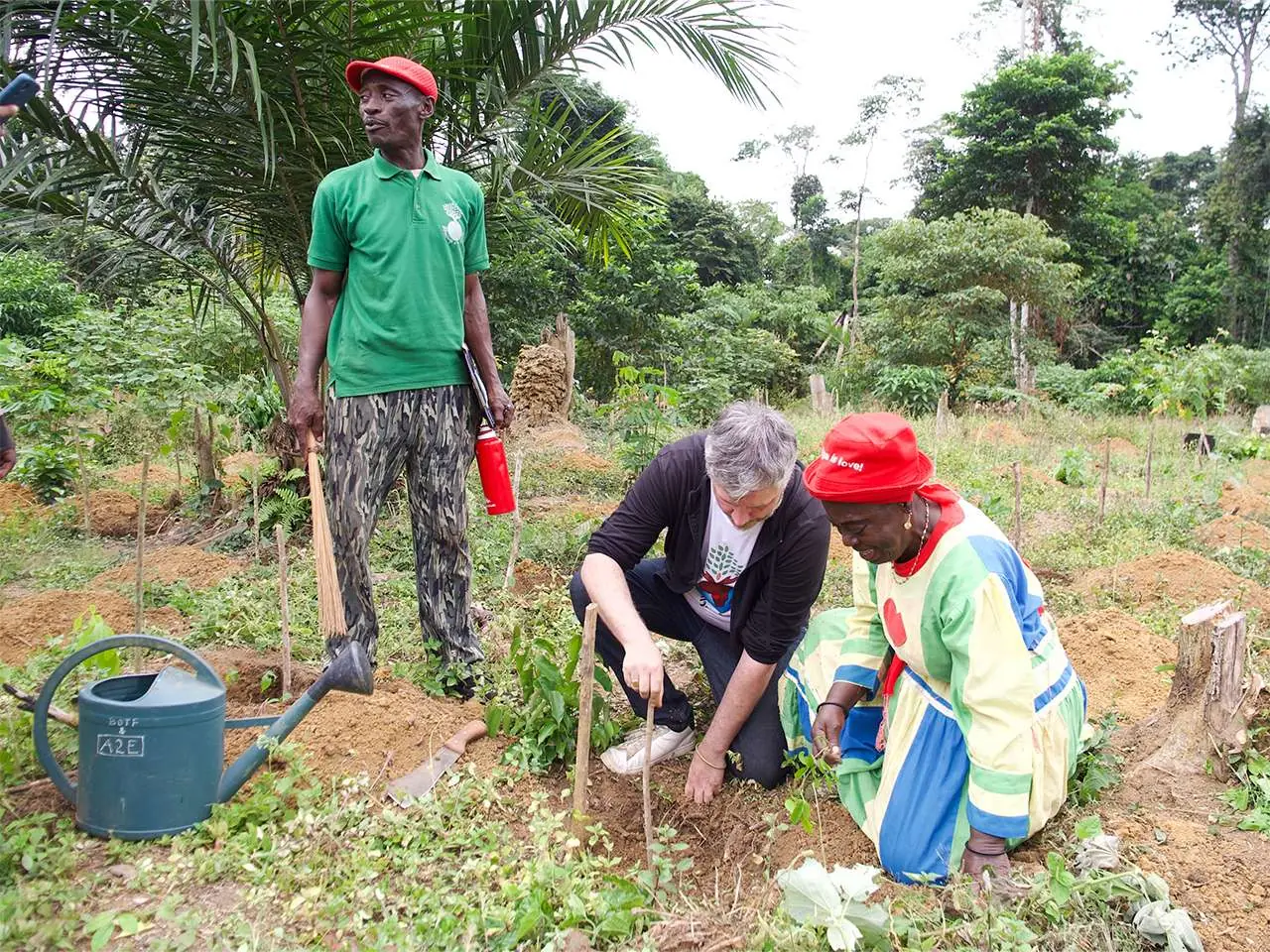Today, ibogaine is used in specialized clinical settings to support recovery from:
among other conditions.
Neuroscience is yet to clarify ibogaine’s exact mechanisms of action, but we have decades of real-world evidence to show that it can reduce and eliminate acute withdrawal symptoms from opioid use and cravings from other substances and behaviors. After using ibogaine, patients often report having clearer minds and that life begins to move slower, offering a new critical window to regain agency lost in active addiction.
For many patients living with complex trauma, depression, grief, or psychological stagnation, standard treatments –like anti-depressants, talk therapy, or cognitive behavioral therapy – sometimes aren’t effective. Ibogaine offers a new option when traditional psychiatry falls short, and patients often report new mental clarity, emotional resilience, increased patience and focus following treatment. Additional reported outcomes include the reduction of neuropathic pain, improved eyesight, better sleep, and liberation from certain prescription medications.
Emerging fMRI data indicates that ibogaine is neuroregenerative; studies and case reports of people with traumatic brain injury (TBI), multiple sclerosis (MS), and Parkinson’s suggest that ibogaine can help the brain heal and reduce debilitating symptoms, providing new hope for the treatment of deeply challenging diseases and conditions.
While scientific research has not kept pace with the results we have observed in over 3,000 clinical treatments, it is our hope that future trials will explain the myriad successes patients are experiencing following ibogaine treatment. Until then, Ambio is committed to providing the most clinically advanced, human-centric ibogaine care on earth – sharing our clinical findings and our patients’ stories with the world in pursuit of broader understanding and improved access to this transformative medicine.
Among psychedelic medicines, ibogaine exists in a class of its own. Unlike other substances like psilocybin or ayahuasca, ibogaine is not typically euphoric, nor is it used recreationally. Its effects are long-lasting (up to 24 or 48 hours). It can be physically demanding, and usually evokes a strong physiological, mental, and emotional response in patients who consume it.
Among psychedelic medicines, ibogaine exists in a class of its own. Unlike other substances like psilocybin or ayahuasca, ibogaine is not typically euphoric, nor is it used recreationally. Its effects are long-lasting (up to 24 or 48 hours). It can be physically demanding, and usually evokes a strong physiological, mental, and emotional response in patients who consume it.
Ibogaine is an atypical psychoactive that can produce a variety of different effects. It’s often described as oneirogenic, meaning that it stimulates a “waking dream” state. The mental effects of ibogaine can feel deeply introspective, psychoanalytic, and significant, but can also be sometimes difficult to remember or inconclusive. Regardless, people often describe a quieter, less impulsive mind in the weeks and months after treatment, providing fertile ground for change.
Ibogaine is an atypical psychoactive that can produce a variety of different effects. It’s often described as oneirogenic, meaning that it stimulates a “waking dream” state. The mental effects of ibogaine can feel deeply introspective, psychoanalytic, and significant, but can also be sometimes difficult to remember or inconclusive. Regardless, people often describe a quieter, less impulsive mind in the weeks and months after treatment, providing fertile ground for change.
Temporary physical effects can include ataxia (lack of coordination and muscle control), nausea and vomiting, and a reduced heart rate. Cardiac changes and drug interactions carry risks that have to be managed by careful medical screening and monitoring. However, ibogaine can also produce physiological healing effects that are far more pronounced than other psychedelics. Its capacity for cellular and neurological repair is unmatched by any pharmacotherapy known to modern science – and has shown benefits for some conditions where there are no regenerative options.
Temporary physical effects can include ataxia (lack of coordination and muscle control), nausea and vomiting, and a reduced heart rate. Cardiac changes and drug interactions carry risks that have to be managed by careful medical screening and monitoring. However, ibogaine can also produce physiological healing effects that are far more pronounced than other psychedelics. Its capacity for cellular and neurological repair is unmatched by any pharmacotherapy known to modern science – and has shown benefits for some conditions where there are no regenerative options.
More research is needed to pinpoint the precise mechanisms responsible for ibogaine’s therapeutic effects, but current research suggests it’s likely effective for healing due to several diverse actions co-occurring in the body: including new psychological flexibility and changes to neurocircuitry involved in pain, mood, motor function, and cognition.
More research is needed to pinpoint the precise mechanisms responsible for ibogaine’s therapeutic effects, but current research suggests it’s likely effective for healing due to several diverse actions co-occurring in the body: including new psychological flexibility and changes to neurocircuitry involved in pain, mood, motor function, and cognition.

Ibogaine can trigger a critical period of heightened neuroplasticity, sometimes described as a ‘neurological second childhood’. Neuroplasticity occurs most rapidly when we’re young, allowing us to learn, heal, and change in response to experience. As we age, this flexibility declines. Brain imaging following ibogaine treatment indicates changes and growth of neural pathways occurring at speeds highly unusual for the adult brain. This new period of revived neural flexibility makes it easier to adapt and change. For those seeking to break old patterns or recover from illness or injury, this new window of adaptability can be life-changing.

Unlike most commercial drugs, which act on a single receptor type, ibogaine engages a wide array of neurotransmitter systems at once. It increases serotonin levels much like SSRIs, but through a completely unique mechanism. It also restores balance to dopamine and opioid receptor systems, which helps relieve cravings, compulsions, and the emotional pain that drives substance use. This broad-spectrum modulation supports mood regulation, emotional processing, and deeper stability post-treatment.

Ibogaine is a ‘non-competitive antagonist’ of the NMDA receptor, a brain receptor involved in pain processing, learning, and memory. Through this mechanism, ibogaine seems to reduce certain types of neuropathic pain and help loosen entrenched physical and emotional patterns. NMDA modulation also contributes to the medicine's overall neuroplastic and neuroregenerative effects, supporting a system-wide shift toward healing.

Ibogaine and its metabolite, noribogaine, have been shown to boost levels of brain-derived neurotrophic factor (BDNF) and glial cell-derived neurotrophic factor (GDNF), proteins essential for neuron health and repair. GDNF, in particular, is a target in Parkinson's research due to its ability to regenerate dopamine neurons. By increasing these neurotrophic factors, ibogaine may support long-term recovery from neurodegenerative conditions and enhance physical resilience.


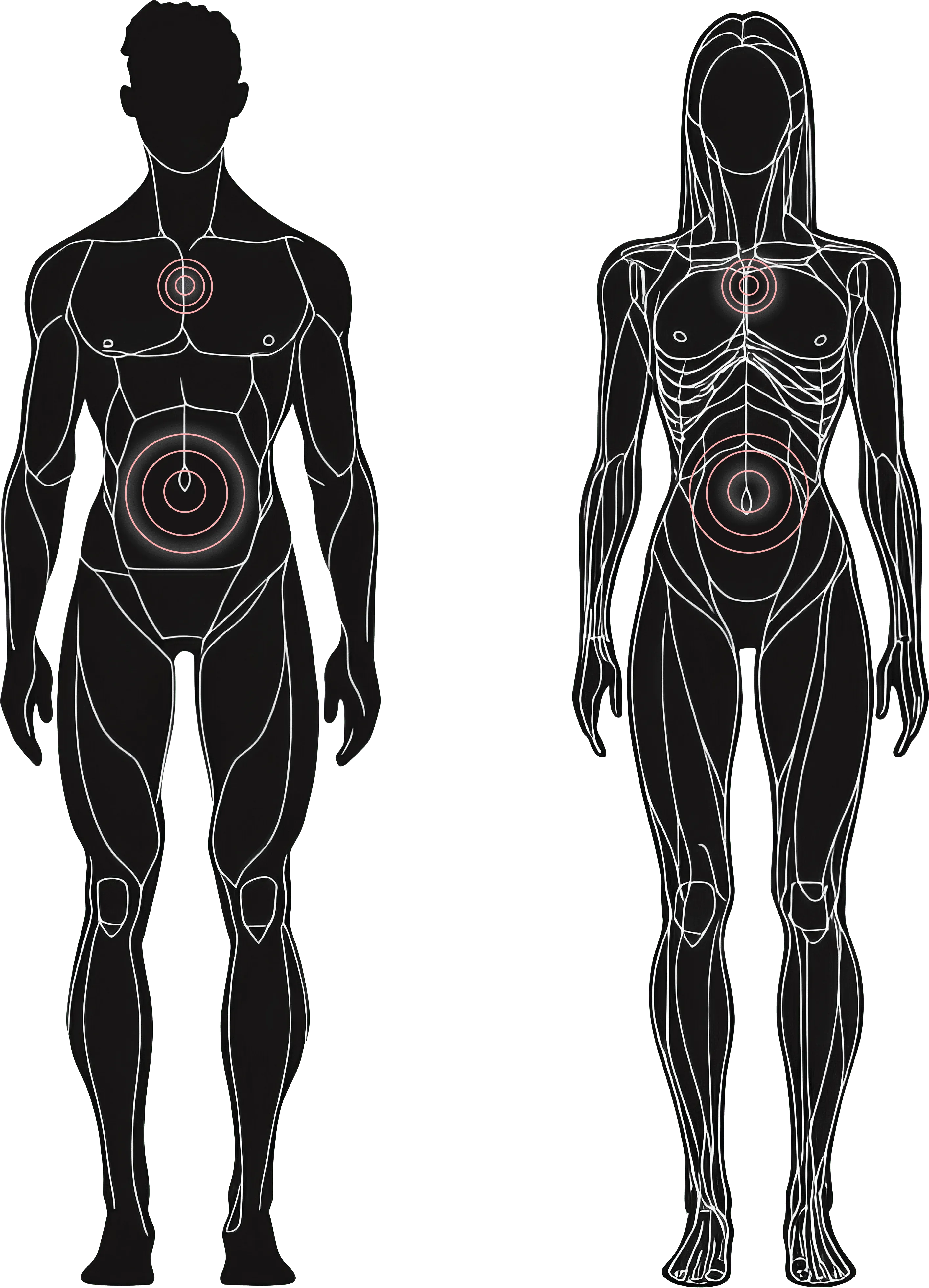



All patients of our Mexico and Europe clinics are privately and securely transported to and from either San Diego or Malta to the clinic site by Ambio’s own shuttle service. Our programs are designed to be immersive, continuous, secure, and supportive, with structured scheduling from beginning to end. Patients are guided every step of the way by our experienced clinical, therapeutic, and hospitality teams. Accommodations and treatment spaces are designed for comfort and rest with high-touch, round-the-clock care.Every patient undergoes rigorous pre-screening before treatment. This includes a full medication review, cardiac testing, comprehensive lab work, and often, tapering off certain medications or substances. We support many guests in tapering opioids, SSRIs, or other medications before or during their time at Ambio.
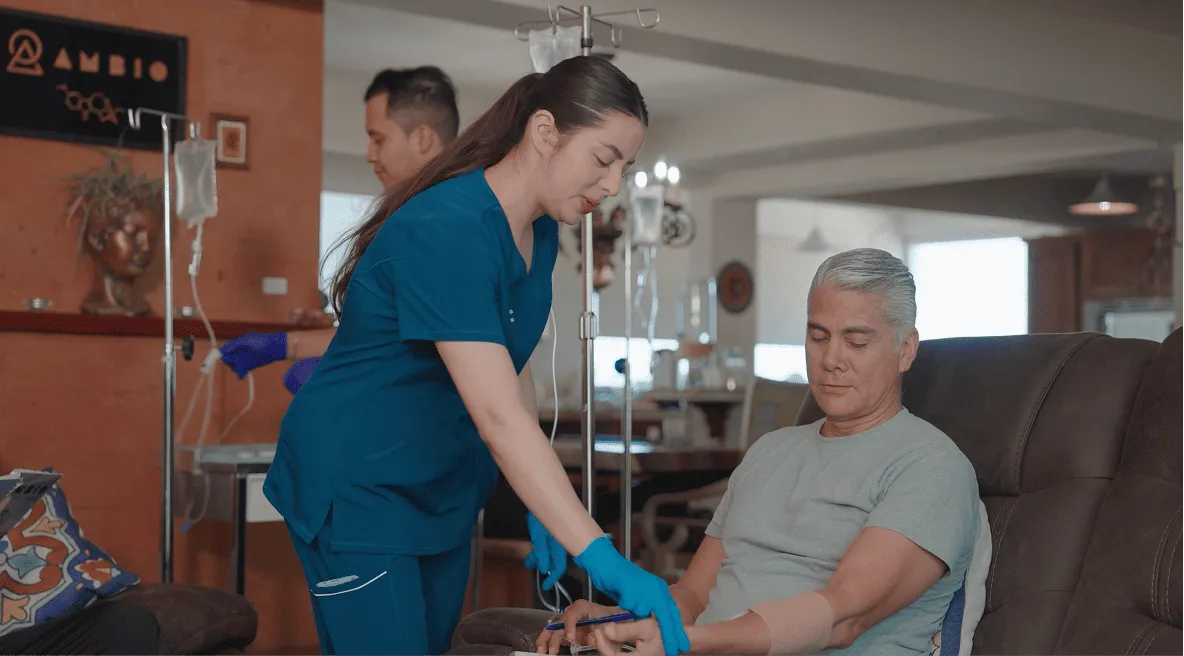
Ibogaine is administered orally under continuous medical supervision. In our foundational and detoxification programs, we use a "flood dose" protocol to catalyze transformation or interrupt dependence. Dosing is individualized based on body weight and health history. Ibogaine treatment is often conducted in a group setting over 12-24 hours (depending on individual needs and physiological response). During treatment, patients are connected to an IV for fluids and supplementation and continuously monitored with real-time vitals tracking. The treatment space itself is staffed by a skilled medical team and equipped to the standard of a cardiac ICU – yet it remains tranquil, candlelit, and intentionally designed for introspection and comfort. Guests often personalize their space with meaningful items or altar objects. Traditional Bwiti music is played to honor the cultural lineage of iboga, and gentle spiritual practices are welcomed. Though the experience is inward and personal, guests are safely held, monitored, and cared for from beginning to end.
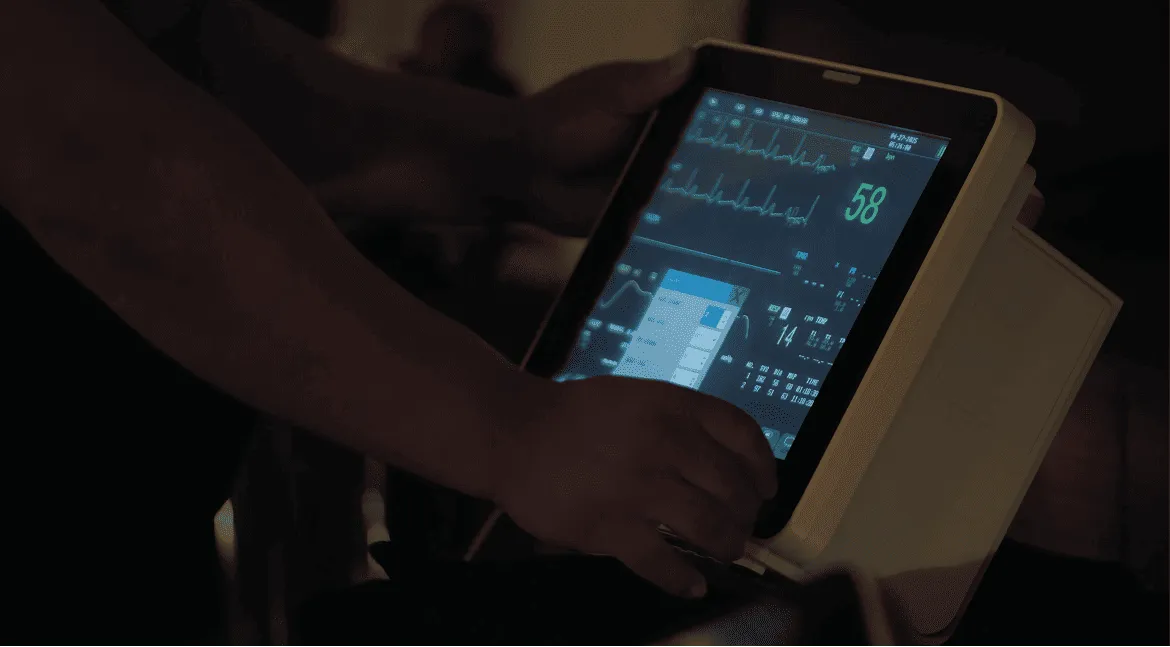
The day following ibogaine treatment is typically a period of rest and reflection. During their “Gray Day,” patients often experience sleeplessness, and can feel physically and emotionally drained after experiencing the powerful physiological effects of ibogaine. This is a day of recovery, holistic treatments, and deep care and restoration.

Comprehensive pre-screening (EKG, labs, medication review)
Cardiac telemetry monitoring during treatment episodes
Clinical oversight by highly experienced medical staff
On-site emergency equipment and ACLS-trained response teams
A track record of over 3,000 safe treatments
Ibogaine is not legal in every country. Federally in the United States, it is classified as a Schedule I substance, meaning it is considered to have no accepted medical use and a high potential for abuse. This designation significantly limits clinical research and medical access, though advocacy and legislative efforts are ongoing to reclassify it based on emerging evidence of its therapeutic potential.
In Mexico and Malta, ibogaine is unscheduled, allowing us to offer safe, confidential treatment in a clinically regulated environment. This legal framework ensures that our clients receive care that is not only effective and ethical, but fully compliant with local regulations.
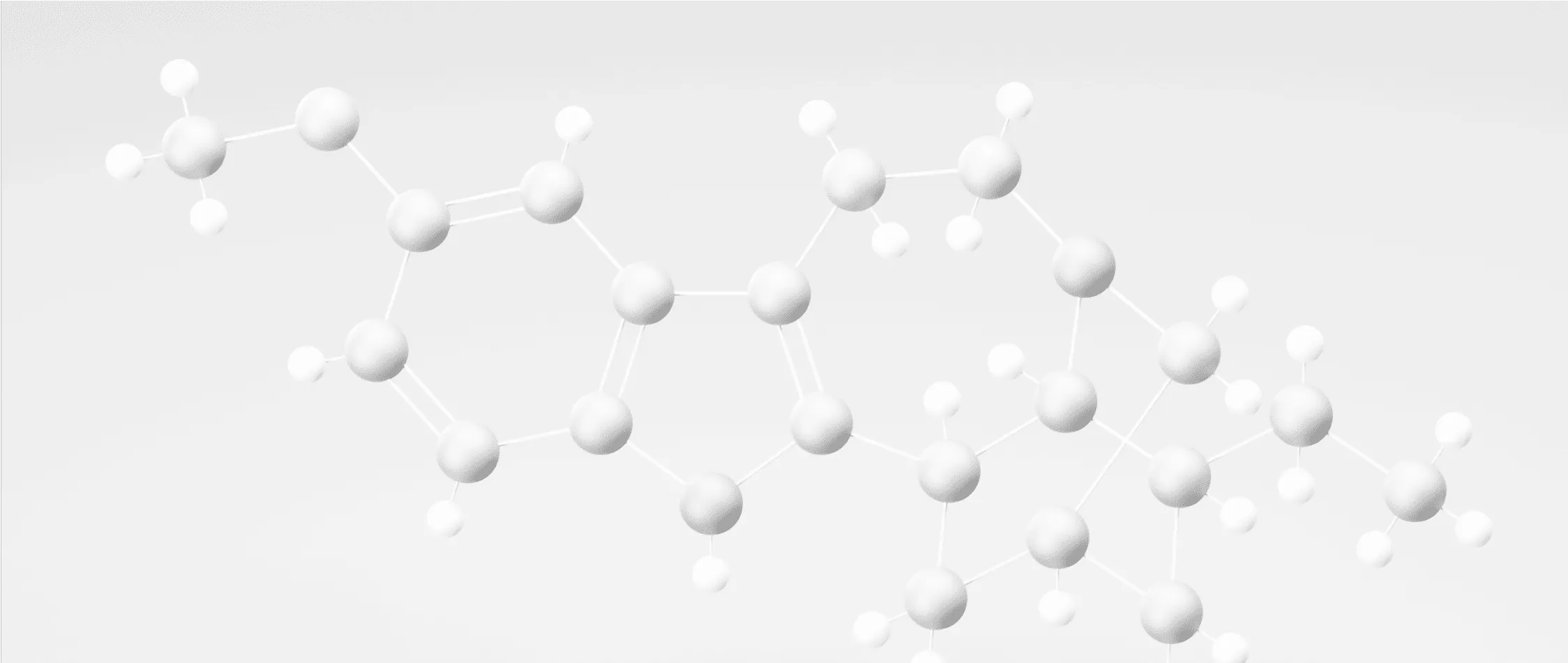
Ibogaine is a naturally occurring medicinal alkaloid found in a number of plant species within the Apocynaceae family, which are native to the African continent. The most well-known source is the root bark of Tabernanthe iboga, a perennial shrub indigenous to the rainforests of Central and West Africa. This plant has long held sacred significance for the Bwiti spiritual tradition in Gabon.
For Western clinical use, ibogaine is extracted and semi-synthesized from voacangine, another alkaloid found in some Apocynaceae family plants such as Voacanga africana. Voacanga is cultivated in countries like Ghana for a variety of health applications, and so it offers a renewable source of ibogaine precursor. While iboga farming is growing in Gabon and Ambio contributes to the growth of this important supply chain, most clinics rely on semi-synthetic voacangine-derived ibogaine.
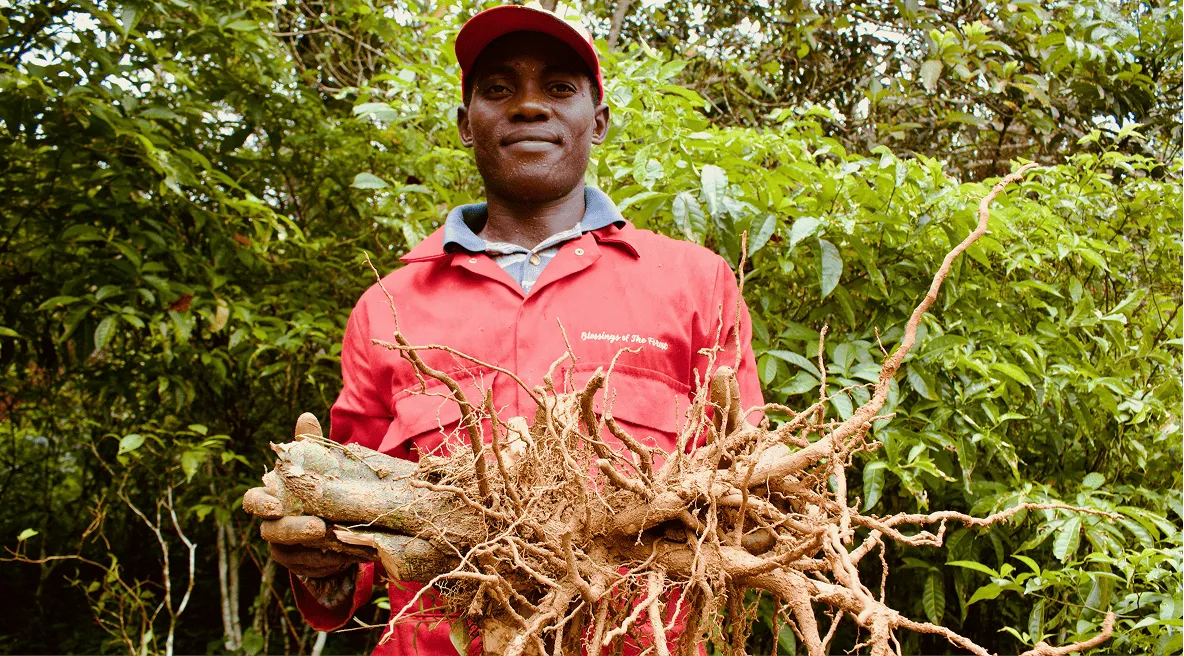
Iboga has been consumed by native African cultures ceremonially and medicinally for millennia. Knowledge of iboga dates its earliest use by the Pygmies, one of the world’s oldest continuous human lineages. While the true history of iboga is likely much older than archaeology can verify, its contemporary use and protection is mostly attributed to those of the Bwiti spiritual practice, which emerged around the 19th century in Gabon.
In the traditional method of harvesting iboga, practitioners uproot the tree and scrape away the thin outer layer of bark with a knife to reveal the ibogaine-rich inner sapwood layer. This inner bark is typically dried, then pulverized into a fine, bitter-tasting powder.
Although ibogaine is the principal psychoactive alkaloid in iboga, there are at least 13 others present in the plant which may have other, or entourage, effects. In Africa, iboga root is either chewed, or administered orally in its highly concentrated powdered form.
In local dialects, iboga means “to heal” or “to care for.” Small amounts produce stimulant effects, while large amounts are used in days-long ceremonies for initiative purposes, spiritual cleansing, communication with ancestral realms, and powerful visionary journeys.
In the early 1900s, French pharmacologists first evaluated ibogaine’s pharmacodynamics. In 1939, the first small-dose pharmaceutical version of ibogaine, called Lamberene, was made available in Europe, marketed to improve mood, energy, and mental acuity, and recovery from illness and infectious disease. After World War II, it became a popular sports endurance supplement, and was eventually banned in 1966.
In North America, ibogaine’s contemporary interest was sparked by a young man named Howard Lotsoff, who in 1962 discovered that one dose of ibogaine completely erased his cravings for heroin. Lotsoff’s legacy includes decades of advocacy for ibogaine research, patent filings, and collaboration with others who sought to develop ibogaine as a pharmaceutical. This work set the stage for ibogaine clinics to emerge in Mexico in the late 1990s.


Ambio has a strong commitment to honoring the tradition and history of iboga and ibogaine, and its earliest pioneers.
Ambio’s CEO, Jonathan Dickinson, holds the first and only export license for Tabernanthe iboga issued by the Gabonese government. In 2024, through Terragnosis Inc., the first GMP extract of Tabernanthe iboga was made available for clinical use at Ambio and for clinical research. It also marked the first time an ibogaine product was compliant with the Nagoya protocol, a UN treaty which ensures equitable benefits for traditional knowledge holders from the Bwiti tradition in Gabon.
While most ibogaine used at Ambio is still produced semi-synthetically, research and development of a standardized total alkaloid extract of iboga continues. This ibogaine, which has been sourced ethically, protects access and provides benefits for traditional communities in Gabon, which takes advantage of the effects of these other alkaloids in their natural balance. Ambio has a strong partnership with Blessings of the Forest, an international iboga conservation not-for-profit.
Ambio remains deeply grateful for the discovery, tradition, and pioneering work that has led to the availability and knowledge of iboga and ibogaine. Our clinical work is only possible thanks to the exploration and sacrifice of those who have come before us.
